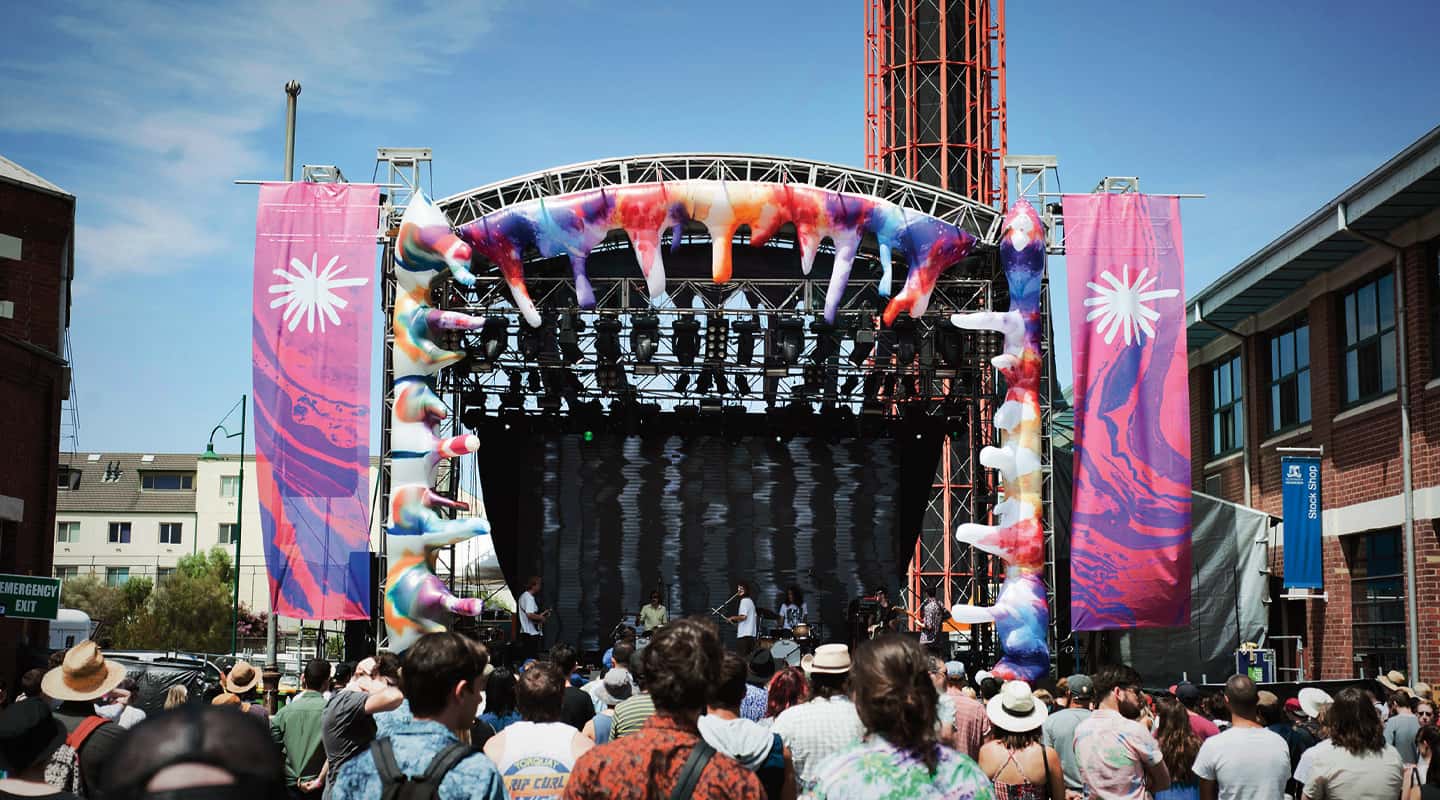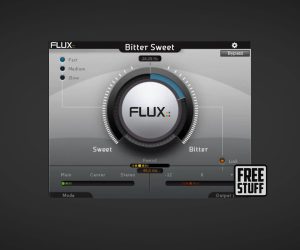
Sweet
Art meets rock at Sugar Mountain. Except for headliner Nas, where hip hop meets hipsters. Confused? Get in line.
Artist Photos: Andrew Bibby
Demographers keen to determine the exact size of Melbourne’s hipster population need only have taken their clickers to the turnstiles of January’s Sugar Mountain music festival. Brunswick Street’s cafes remained eerily quiet as hipsters of all genders and persuasions dutifully filed into the annual gathering where Art meets Music.
Traditionally held in and around Melbourne’s Forum theatre, Sugar Mountain attempted to scale new heights, camping in the Victorian College of the Arts precinct, basking in the performing arts glow and revelling in the alleyways of the urban landscape. This is the hipster’s natural habitat.
As is the Sugar Mountain way, the roster was eclectic, but heavy on the experimental, the ironic, the camp, the geeky… And then there was Nas. Hip hop royalty had come to town to play out his debut album, Illmatic. It was an unusual fit for Nas. But he headlined the main stage with one hour of intense, right-outta-the-projects sincerity. His performance was near flawless, but more like a straight-faced punchline to a day-long in-joke.


RRR-EMOTE MIXING
Melbourne public radio station, RRR, was on site to record and do a six-hour live broadcast. They’d recently invested in a Midas Pro2 console and had set up behind the main stage. Taking a split from stage Dan Moore and Lachlan Wooden took care of the mix for broadcast, while also making a multitrack recording to Pro Tools along with a two-track master. The mix was sent via copper to the on-site RRR broadcast position with a microwave backup.
This is all as it should be, but making lives tough was the stage spill. The open-air RRR mix position was so close to stage that it was very difficult to get anything like good isolation — even mixing on headphones was unreliable. So, using the Midas iPad remote mixing app, the guys set up a robust wi-fi router, and planned to head to a car with a decent stereo, tune into 102.7MHz on the FM dial, and cross-check the mix with what was going live to air. From there, they could fine tune the stem mix from the sweetspot comfort of the driver’s position. Genius!

HIGH RISE WHINGERS
There are some monolithic figures in Australia’s music industry. Giants such as Michael Gudinksy, Michael Chugg… and The Melburnian. Çhe? The residents of The Melburnian apartment block in St Kilda Rd are renowned for putting a dB dampener on any gigs at the Sidney Myer Music Bowl. Bunch of chardy-sipping whingers. Sugar Mountain was also staged under the disapproving shadow of The Melburnian and with that came some stringent noise restriction handcuffs – 94dB at FOH, in fact.
JPJ Audio took care of the PA requirements. Coincidentally JPJ was also operating over the road enriching the lives of The Melburnians by providing sound for a Kooks gig at The Bowl.
JPJ’s Bass Gauci oversaw the Sugar Mountain spec, providing a d&b J rig for the main stage. The PA shoots down South Melbourne’s Dodds St, so the site is narrow with plenty of brick walls to avoid, which JPJ did masterfully. Single delay stacks of J were placed down the street, which came into their own when Nas drew all attendees to the main stage.
Ground-stacked subs included pairs of Infrasubs along with the J-Subs. The LF spill was remarkably minimal at the back of the stage. I’m sure the good burghers of The Melburnian will be sending Bass a congratulatory note and a box of Quality Street.
Stage 2 gave Bruce Johnston’s beloved Nexo Alpha rig a chance to stretch its legs.
The main stage FOH package included Avid Profile mixing and Dolby Lake Processors. On-stage floor monitoring was an all-d&b M series affair.













RESPONSES